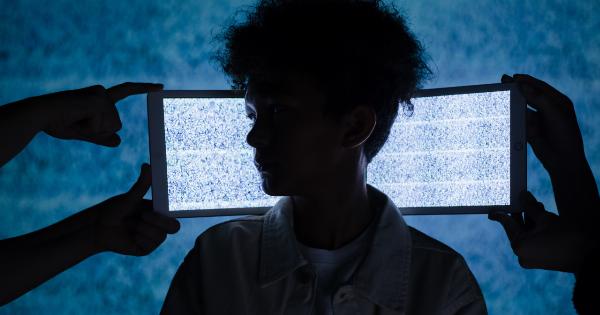Obsessive-compulsive disorder (OCD) is a condition characterized by recurrent, unwanted thoughts (obsessions) and/or repetitive behaviors (compulsions) that interfere with daily activities.
It is estimated that approximately 1-2% of children and adolescents have OCD, with symptoms typically appearing between the ages of 10 and 12 years.
In recent years, there has been growing concern about the impact of screen time on children’s mental health and well-being.
Children and adolescents are spending more time than ever before on devices such as smartphones, tablets, and laptops, which has led to an increase in concerns regarding how this increased exposure to screens may be affecting their mental health.
The Link Between Screen Time and OCD
Research has shown that there may be a link between excessive screen time and the development of OCD in children.
A study published in the Journal of Abnormal Child Psychology found that greater amounts of screen time were associated with higher levels of OCD symptoms in children.
Another study conducted in Australia found that children who spent more time on their devices were more likely to have OCD symptoms, as well as other mental health issues such as anxiety and depression.
Although these studies suggest a correlation between screen time and OCD, it is important to note that the direction of causality is not clear.
In other words, it is not yet known whether excessive screen time causes OCD symptoms, or if children with OCD are more likely to spend more time on their devices.
How Screen Time May Contribute to OCD
There are several ways in which excessive screen time may contribute to the development of OCD in children.
One theory is that frequent exposure to screens can lead to changes in the brain’s reward system, which may increase the risk of developing compulsive behaviors.
Another possibility is that exposure to screens may disrupt the brain’s natural ability to regulate emotions, which may increase the risk of developing anxiety and OCD symptoms.
Additionally, the overuse of technology may lead to sleep disturbances, which have been linked to a range of mental health issues including OCD.
How to Reduce Screen Time in Children
Reducing screen time in children can be a challenge, but there are a few strategies that parents and caregivers can use to help limit their child’s exposure to screens:.
- Set clear rules and guidelines around screen time. For example, limiting screen time to a certain number of hours per day or week, or establishing no-screen zones in the house such as bedrooms or meal times.
- Encourage alternative activities such as reading, playing outside, or doing arts and crafts.
- Model healthy screen time behavior by limiting your own phone and device usage around your children.
- Consider using parental control software to monitor and limit your child’s screen time.
When to Seek Help
If you are concerned that your child may be showing symptoms of OCD or experiencing anxiety related to screen time, it is important to seek professional help.
A mental health professional can help evaluate your child’s symptoms and develop a treatment plan tailored to their individual needs.
Additionally, if you are struggling to limit your child’s screen time despite your best efforts, or if you are experiencing conflict or difficulties in your relationship with your child related to their device use, it may be helpful to seek family counseling.
The Bottom Line
Excessive screen time has become a growing concern for parents, caregivers, and mental health professionals alike. While the link between screen time and OCD is not yet fully understood, research suggests that there may be a correlation between the two.
By setting clear rules and guidelines around screen time, encouraging alternative activities, and seeking professional help when necessary, parents and caregivers can help reduce the risk of their child developing OCD symptoms related to screen time.































